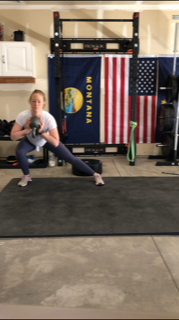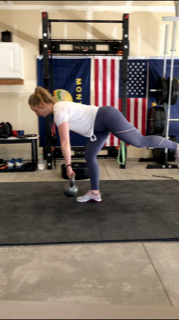As we enter the season of hiking, trail running, fishing, and outdoor recreation this summer, navigation over rocky and uneven terrain or quick direction changes can result in injury. One common injury that can occur from these activities are lateral ankle sprains. Lateral ankle sprains are one of the most common orthopedic injuries, and are often an injury that goes untreated unless the person experiences severe symptoms. While many people who sprain their ankle experience a mild sprain and are back to their activities in a matter of 5-9 days, others continue to deal with prolonged pain and impairments. People who experience lateral ankle sprains, if untreated, can result in long-term ankle instability setting themselves up for recurrent ankle sprains in the future, post traumatic arthritis, and persistent pain.
While there are various grades and severities of lateral ankle sprains, the most common impairments associated with this injury include:
- Ankle and foot swelling
- Instability of the ankle
- Joint line pain of the medial (inside) aspect of the ankle
- Decreased ankle range of motion
- Decreased ankle/lower leg strength
- Decreased balance
- Decreased proprioception
- Slowed timing of ankle muscle activation
There are also some key predictors in order to indicate a high risk for re-injury if you’ve already experienced a lateral ankle sprain. These include a history of previous ankle sprain, failure to use external supports, no performance of a proper static and dynamic warm up prior to activity, lacking ankle dorsiflexion range of motion, and failure to participate in a balance and proprioceptive program after the first ankle sprain.
Luckily, there are plenty of things that can be done to rehabilitate and/or prevent your first, or future ankle sprains. One often overlooked and extremely important area of focus when working on prevention of lateral ankle sprains, is strength and stability of your abdominal/core musculature and hip/gluteal musculature. Single Leg strengthening such as step ups, single leg deadlifts, forward/lateral/reverse lunges, in addition to core strengthening can be useful to help build increased stability for a more stable center of mass, improving your balance and decreasing the demand on your ankles as a last result for stability. Other main areas of focus include adequate ankle range of motion, balance and proprioceptive training.


Addressing ankle range of motion restrictions will be key to decrease your risk of injury/re-injury. Stretching your calf musculature, specifically your gastrocnemius and soleus muscles followed by heel raises throughout your full range of motion, can help improve your ankle motion and improve your strength and stability with the motion that you have.


Balance and proprioception exercises such as single leg balance on a flat or uneven/soft surface, single leg agility drills including hopping, box jumps, lateral hopping, etc. to improve reaction timing and stability with focus on sticking the landing.
If you have experienced a lateral ankle sprain in the past or in the near future, don’t adopt the mindset of “walking it off” and ignore it until it goes away. This could set you up for future re-injury down the road. Don’t hesitate to reach out to a physical therapist to get you back to all of the outdoor adventures that you enjoy doing safely and stronger than ever!
Written by Anna Bechtold, PT, DPT an orthopedic physical therapist at the West Clinic of APRS, an avid trail runner, hiker, and outdoor enthusiast.









